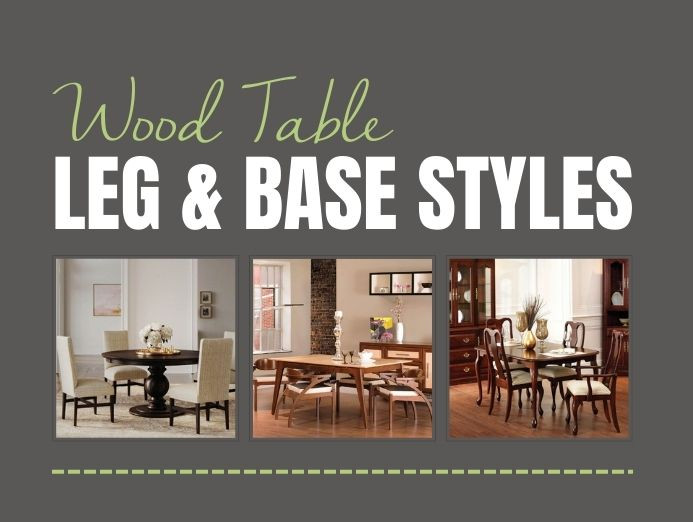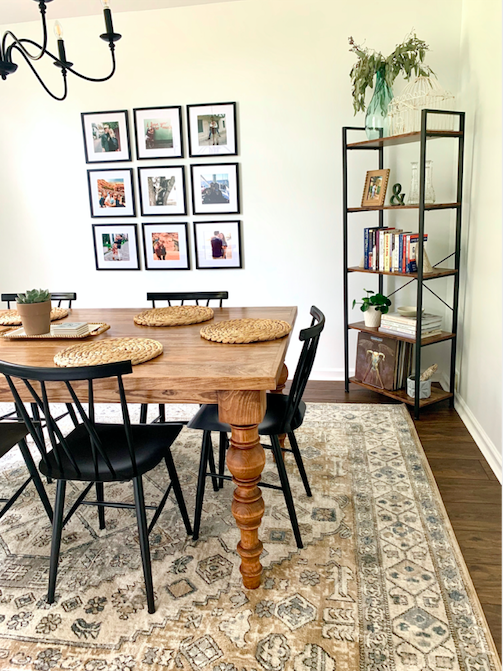How to Maintain and Care for Your Dining Room Table Legs
How to Maintain and Care for Your Dining Room Table Legs
Blog Article
Just How to Pick the Perfect Dining-room Table Legs for Your Home Decor
Choosing the suitable dining-room table legs is a nuanced process that requires mindful factor to consider of various components, including your room restrictions, visual choices, and sensible requirements. The interaction in between products, designs, and dimensions can substantially affect the setting of your eating location, making it vital to approach this decision systematically. As you consider the myriad choices readily available, it comes to be clear that the appropriate selection expands past plain look; it can boost your total eating experience. What variables should you focus on to guarantee your option matches your home's one-of-a-kind personality?
Assess Your Eating Area
Examining your dining area is critical for picking the right table legs that enhance both appearances and capability. Begin by determining the dimensions of your dining area, including ceiling elevation, floor room, and distance to various other furniture. This details will help figure out the suitable dimension and height of your eating table, which directly influences the selection of table legs.
Next, take into consideration the style and design of your dining space. For instance, an open-concept style might gain from table legs that provide aesthetic lightness, such as slender steel or acrylic options. Conversely, a much more typical setting may ask for sturdy wooden legs that offer a feeling of durability.
Evaluate the existing color palette and materials in your dining area. Harmonizing the table legs with these aspects produces a cohesive look that boosts the total decor.
Ultimately, a detailed analysis of your eating space will guide you in making an informed choice, making sure that your table legs not just enhance the visual charm but likewise serve sensible functions.
Consider Your Style Preferences
When picking dining-room table legs, it is vital to review your personal design choices, as they dramatically influence the total visual of your dining room. Your option of table legs can either complement or comparison with existing design, making it important to align them with your recommended indoor design motif.
If your home leans in the direction of a modern visual, take into consideration smooth metal or minimal wooden legs that give a clean, uncluttered appearance. For a much more traditional approach, luxuriant wooden legs with detailed carvings can include a touch of sophistication and refinement. Industrial designs gain from durable, raw materials such as reclaimed timber and steel combinations, showing a sturdy appeal.
In addition, farmhouse and rustic styles often prefer sturdy, chunky legs that stimulate a sense of warmth and convenience. Conversely, if your decor is eclectic, you may pick unique forms or a mix of materials to produce aesthetic interest.

Evaluate Material Options
The choice of material for dining area table legs plays an essential role in both longevity and visual charm. Typical products include wood, metal, and composite options, each offering distinct features that can affect the overall look and longevity of your table.
Timber is a timeless choice, known for its warmth and adaptability. Woods like oak and walnut offer phenomenal strength and can be finished in different discolorations to match any type of style. Nevertheless, softwoods like yearn are a lot more susceptible to dents and scratches, making them much less ideal for high-traffic areas.
Steel legs, commonly crafted from steel or light weight aluminum, radiate modernity and industrial charm. They are immune and extremely durable to wear, making them ideal for households with kids or frequent celebrations (dining room table from this source legs). In addition, metal can be finished in numerous colors, enhancing the customization opportunities
Composite materials, such as MDF or laminate, offer price and diverse designs. While commonly much less resilient than strong timber or metal, they can still give an elegant appearance and are usually simple to maintain.
Inevitably, the material you pick must align with your way of living, aesthetic choices, and the level of usage your dining table will certainly experience.
Determine Height and Dimension
Picking the suitable elevation and dimension for your dining area table is essential for both functionality and comfort. The basic elevation for eating tables usually varies from 28 to 30 inches, allowing enough legroom for many individuals when seated. It is best site important to think about the dimensions of your eating area and the kinds of chairs you plan to utilize.

Furthermore, think about the proportions of your dining space. A bigger table in a large location can develop a grand setting, while a smaller sized table works well in more intimate settings. Eventually, the ideal elevation and dimension will certainly harmonize with your overall decor and enhance the dining experience for you and your guests.
Explore Personalization Possibilities

In addition, the style of the legs can be personalized to fit various designs, such as rustic, contemporary, or industrial. For example, tapered legs can evoke a mid-century modern-day feel, while chunky, block-style legs might resonate with traditional or farmhouse style.
House owners can also discover color finishes, from natural timber spots to repaint, enabling them to match or comparison with the tabletop and bordering design.
Moreover, leg height can be gotten used to fit details seating plans or individual preferences, boosting both comfort and performance.
Lastly, distinct decorations, such as carvings or ornamental braces, can even more individualize the table legs, making the dining experience not just a statement however a dish item in the home. By thinking about these modification options, house owners can create a dining-room table that truly shows their originality.
Conclusion
Selecting the perfect dining-room table legs calls for careful consideration of different variables, consisting of the dimensions of the dining area, style choices, product durability, and desired height. Personalization alternatives better enhance the ability to achieve a cohesive aesthetic that matches the general decoration. By methodically reviewing these components, homeowners can ensure that the chosen table legs not only fulfill functional requirements but also contribute positively to the eating experience and setting of the home.
Picking the ideal eating area table legs is a nuanced procedure that calls for cautious factor to consider of various components, including your room restraints, visual choices, and functional needs.Evaluating your dining room is critical for choosing the right table legs that complement both aesthetic appeals and performance.When identifying size, measure the area where the table will be positioned to guarantee it fits conveniently, allowing for at the very least 36 inches of clearance around the table for very easy motion. A larger table in a sizable area can develop a grand atmosphere, while a smaller table functions well in more intimate settings.Picking the suitable dining room table legs calls for mindful factor to consider of various factors, consisting of the dimensions of the eating area, design choices, material longevity, and preferred height.
Report this page